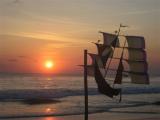Posted under Russia
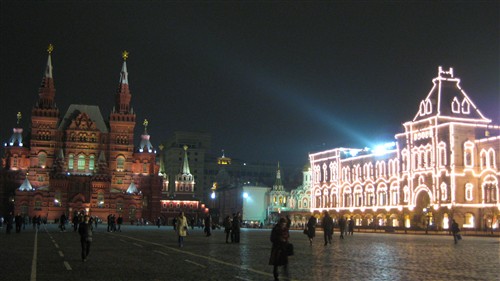
Vast and mysterious, rough and raw, with searing cultural intrigue and political history, Russia is endlessly captivating, an appropriate finale to our epic adventure. But Russia almost didn’t happen. It was Aaron’s stubborn determination and the hand of fate that finally saw the Russian visa stickers added to our collection.
After failing at our first attempt to secure a Russian visa in Barcelona, my enthusiasm waned when I realized that our next attempt in Rome would cut into an already packed itinerary. But when Aaron fixes his mind to a task or idea, only God Himself can stop him from achieving it, a quality that I find both admirable and maddening.
On our first day in Rome, with my fabulously easy-going sister, Natalie, in tow, we spent the better part of two hours just finding the Russian Embassy. Despite our dismissal from the Russian Embassy in Barcelona, we thought our excessively bureaucratic stack of documents to be in order and we found ourselves waiting behind a solid, closed door. We had arrived during the posted visa application hours and had confirmed that we were at the right office, yet the door remained inexplicably closed for over an hour as we sat there, twiddling our thumbs and cursing the bureaucrats under our breath. A couple of people attempted to poke their heads inside the door but were quickly shooed away with no explanation. As the minutes passed, my aggravation festered and Aaron’s patience also began to fade. At 10:50am, we made a pact to tear up our documents right there in the embassy in a dramatic scene of contempt if the door did not open by 11:00. We sat on the cold stone steps, staring at our watches and growing emboldened with each passing minute so that the resolved Charade playing out in my mind was becoming increasingly animated. Then, almost at the buzzer, somewhere between 10:58 and 10:59, a sudden click…and the door opened. Once inside, the agent was surprisingly helpful and expedited the processing of our request using the exact paperwork with which we had been denied in Barcelona.
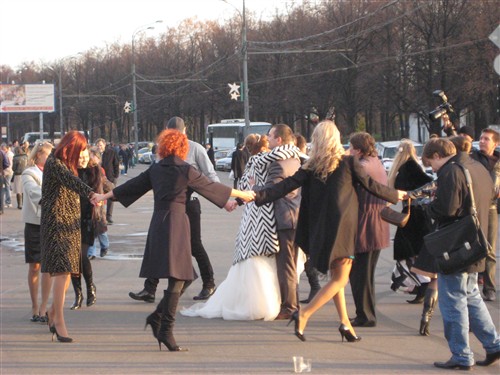 From the first day of our arrival in Saint Petersburg to our last day in Moscow, Russia did not disappoint. Russia has a dizzying number of things to see: beautiful baroque skylines, unique onion-domed cathedrals, fascinating museums, and sober Soviet-era buildings across from modern high-end shopping malls. All corners of Moscow and Saint Petersburg are under constant surveillance by an intimidating number of military and policemen and all corners are connected by one of the most efficient (if not foreign-user-friendly) and utilized public transport systems in the world, which is also heavily policed.
From the first day of our arrival in Saint Petersburg to our last day in Moscow, Russia did not disappoint. Russia has a dizzying number of things to see: beautiful baroque skylines, unique onion-domed cathedrals, fascinating museums, and sober Soviet-era buildings across from modern high-end shopping malls. All corners of Moscow and Saint Petersburg are under constant surveillance by an intimidating number of military and policemen and all corners are connected by one of the most efficient (if not foreign-user-friendly) and utilized public transport systems in the world, which is also heavily policed.
While the language barrier proved to be our biggest challenge to traveling independently in Russia, we found that ordinary people would bend over backwards to help us whenever they could. When we found ourselves standing in the wrong ticket line at the train station one morning, the kind gentleman behind us gave up his place in line to take us outside and explain, in very broken English, which way we needed to go. During one of our most confused moments inside the metro station, a middle-aged woman stopped to offer help and guided us through the underground maze to our connecting line. We found that, beneath those characteristically dour expressions, was genuine warmth and caring.
Our last week in Moscow concluded with strange happenings that were apropos of our Russian adventures. We had wanted to attend an ice hockey game on one of our last nights in Moscow and, with our host Tanya’s help, conducted our due diligence for securing tickets. We were directed to a yellow kiosk outside one of the metro stations that was supposed to sell tickets but, when we arrived, the women working at the kiosk were clueless. We managed to find our way to the arena where two ticket windows were open. We bought two tickets for Saturday’s game, ecstatic about our accomplishment.
When Saturday rolled around, we spent the morning indoors, attending to some business tasks, and then ventured out around 2pm, intending to poke around the nearby university area before heading to the 4:oo game. The university area turned out to be gorgeous with wooded walking trails and a scenic lookout over the city. The weather was beautiful and we walked leisurely along the trail with little regard for reaching the hockey arena before the second period. The arena was a single metro stop away from the university and, when we finally surfaced at the arena stop, we were greeted by hundreds of military and policemen, decked out in full riot gear. We could hear the roaring crowd inside the arena but there was little activity outside and the security forces stood in wait. There were at least six different groups, each with their own uniforms. Naturally, the scene outside and the screams of the hockey fans inside prompted us to conjure up visions of riotous scenarios in which we could find ourselves entangled.
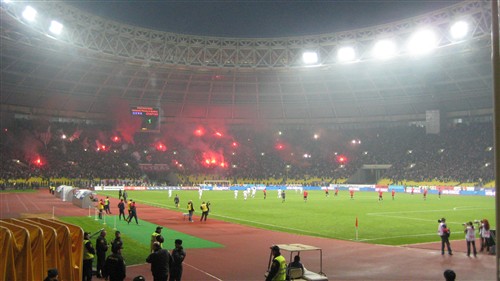
We found our entrance, passed through heavy security screening, and entered the arena to find…soccer. When I first glimpsed the green field, I said, “Oh, it’s field hockey.” Then, in a Twilight Zone moment, we walked further inside and realized that it was not hockey at all but rather a professional soccer game between two Muscovite rivals. We looked at each other, dumbfounded, and just started laughing.
This hilarious mix-up, on our last night in Moscow, was symbolic of the difficulty of independent travel in Russia. It was as rewarding as it was challenging. Russia was full of surprises…beautiful, enlightening, funny surprises. The scenery was breathtaking, the culture and history fascinating.
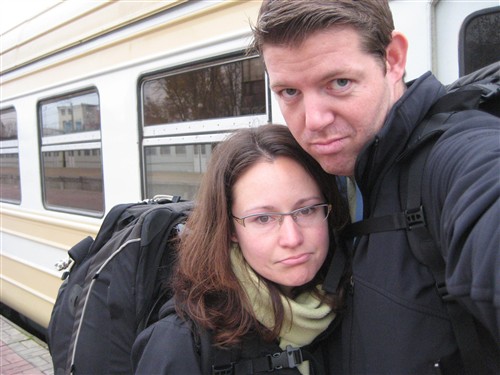 As this epic fourteen-month journey comes to an end, we are both happy and sad. The most amazing, intense, life-changing chapter in our lives is coming to a close. We have come to feel at home on the road and enjoy the simplicity of living out of our backpacks. We find ourselves addicted to the crazy adventures and, even more so, addicted to learning. We have loved spending all of this time together. It has drawn us closer and bonded us tighter than we ever could have imagined. But all good things must come to an end and, as we think about seeing our family, friends and our sweet little dog, we find ourselves as exhilarated as we were on the first day of this adventure. While we are sad to close such a brilliant chapter in our lives, we are excited to start down a new path and wildly curious to see where it takes us. To conclude with the last three lines from my favorite Robert Frost poem:
As this epic fourteen-month journey comes to an end, we are both happy and sad. The most amazing, intense, life-changing chapter in our lives is coming to a close. We have come to feel at home on the road and enjoy the simplicity of living out of our backpacks. We find ourselves addicted to the crazy adventures and, even more so, addicted to learning. We have loved spending all of this time together. It has drawn us closer and bonded us tighter than we ever could have imagined. But all good things must come to an end and, as we think about seeing our family, friends and our sweet little dog, we find ourselves as exhilarated as we were on the first day of this adventure. While we are sad to close such a brilliant chapter in our lives, we are excited to start down a new path and wildly curious to see where it takes us. To conclude with the last three lines from my favorite Robert Frost poem:
Two roads diverged in a wood, and I –
I took the one less traveled by,
And that has made all the difference.
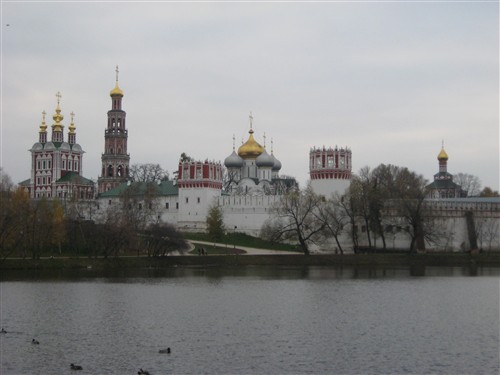
 Novodevichy Monastery is located southeast of the city center on the Moscow River. Founded in 1524 to celebrate the retaking of Smolensk from Lithuania, it later served as a strategic watch guard, alerting the city of potential invaders. Today the beautiful white-walled complex with red-and-white baroque turrets, shines brightly against the backdrop of a small suburban lake and park. The obligatory gilded onion domes crown the bell tower and cathedrals housed within the fortress. Before we entered the monastery, we admired the view from afar with a lazy walk around the adjacent lake. With the trees holding on to their last golden leaves and the monastery reflecting on the windswept lake, I was, of course, in photography heaven.
Novodevichy Monastery is located southeast of the city center on the Moscow River. Founded in 1524 to celebrate the retaking of Smolensk from Lithuania, it later served as a strategic watch guard, alerting the city of potential invaders. Today the beautiful white-walled complex with red-and-white baroque turrets, shines brightly against the backdrop of a small suburban lake and park. The obligatory gilded onion domes crown the bell tower and cathedrals housed within the fortress. Before we entered the monastery, we admired the view from afar with a lazy walk around the adjacent lake. With the trees holding on to their last golden leaves and the monastery reflecting on the windswept lake, I was, of course, in photography heaven. The compound is still an operating monastery but the highlights for us were the two special exhibits which displayed the monastery’s impressive collection of Orthodox iconography, art and religious artifacts. There were other notable sights including the Smolensk Cathedral, an imposing bell tower, and the adjacent Novodevichy Cemetery – final resting place for several famous (and infamous) Russians.
The compound is still an operating monastery but the highlights for us were the two special exhibits which displayed the monastery’s impressive collection of Orthodox iconography, art and religious artifacts. There were other notable sights including the Smolensk Cathedral, an imposing bell tower, and the adjacent Novodevichy Cemetery – final resting place for several famous (and infamous) Russians.

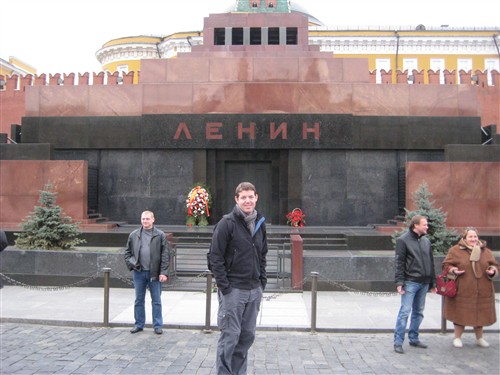 Inside the mausoleum, we climbed a short, dark stairway into a dark room. In the center, Lenin’s illuminated corpse glowed like the moon inside a glass case. He wore a dark suit and his legs were covered in red velvet cloth. One hand was clenched in a fist but the other lay flat and I recall that his fingernails looked to be covered in yellowish fungus. We stared, dumbstruck, unable to look away. We were paralyzed with morbid fascination. One of the guards inside urged us forward and we started moving, albeit slowly, around the perimeter. It was a powerful experience. Lenin, who murdered over a million of his own people, abused and starved countless others to push through a social and political agenda that simply doesn’t work, is revered. After Lenin’s death, Stalin had Lenin’s brain removed so that he could study the “perfect Communist brain”.
Inside the mausoleum, we climbed a short, dark stairway into a dark room. In the center, Lenin’s illuminated corpse glowed like the moon inside a glass case. He wore a dark suit and his legs were covered in red velvet cloth. One hand was clenched in a fist but the other lay flat and I recall that his fingernails looked to be covered in yellowish fungus. We stared, dumbstruck, unable to look away. We were paralyzed with morbid fascination. One of the guards inside urged us forward and we started moving, albeit slowly, around the perimeter. It was a powerful experience. Lenin, who murdered over a million of his own people, abused and starved countless others to push through a social and political agenda that simply doesn’t work, is revered. After Lenin’s death, Stalin had Lenin’s brain removed so that he could study the “perfect Communist brain”.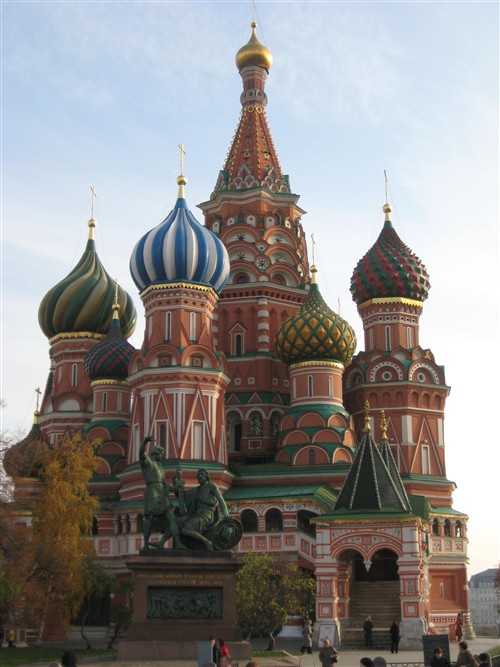 Our final stop in Red Square was Saint Basil’s Cathedral. We had photographed its brilliant polychromatic domes from every angle but we had not yet been inside.
Our final stop in Red Square was Saint Basil’s Cathedral. We had photographed its brilliant polychromatic domes from every angle but we had not yet been inside.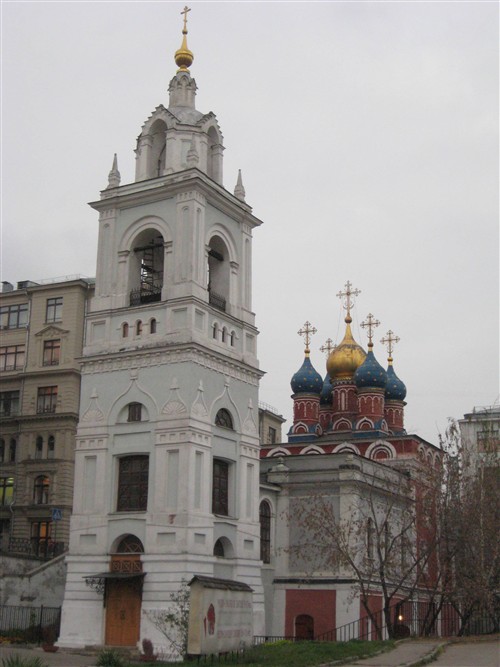 We still had a long walk ahead of us and a list of interesting places to see so we quickly recovered and set out for the medieval neighborhood of Kitay Gorod. Located just southwest of Red Square, the 13th century neighborhood was the first to be established outside the protection of the Kremlin walls. We walked the streets toward a cluster of smaller but still impressive versions of Russia’s unique onion-domed churches. Not long into our foray, we began to notice a large number of luxury cars parked along the street and several black-clad muscle men lurking about in small groups, eyeing us suspiciously as we walked by. Our instincts told us that we had stumbled upon the Russian mafia and we felt an air of uneasiness but decided that our best course of action was to play the role of ignorant tourists – we were conveniently dressed for the part – snapping excessive photos of the churches without a backward glance. The moment passed without incident, of course, but we won’t soon forget that creepy feeling of brushing up against the mob.
We still had a long walk ahead of us and a list of interesting places to see so we quickly recovered and set out for the medieval neighborhood of Kitay Gorod. Located just southwest of Red Square, the 13th century neighborhood was the first to be established outside the protection of the Kremlin walls. We walked the streets toward a cluster of smaller but still impressive versions of Russia’s unique onion-domed churches. Not long into our foray, we began to notice a large number of luxury cars parked along the street and several black-clad muscle men lurking about in small groups, eyeing us suspiciously as we walked by. Our instincts told us that we had stumbled upon the Russian mafia and we felt an air of uneasiness but decided that our best course of action was to play the role of ignorant tourists – we were conveniently dressed for the part – snapping excessive photos of the churches without a backward glance. The moment passed without incident, of course, but we won’t soon forget that creepy feeling of brushing up against the mob. Taking the scenic route “home”, we passed by the Lubyanka Building, the former headquarters of the infamous KGB, which now houses its successor, the Federal Security Bureau; the Museum of Modern Art; and, most importantly, the world’s largest and busiest McDonald’s. With the capacity to accommodate up to 700 Hamburglars, the place was a zoo. After standing in a massive queue, we proceeded to suffer through the most excruciating ordering experience in our broad portfolio of international McDonald’s encounters. Out of 36 countries, Russia has posed the biggest language barrier. We did finally manage to communicate our order and get what we wanted but we left feeling defeated nonetheless.
Taking the scenic route “home”, we passed by the Lubyanka Building, the former headquarters of the infamous KGB, which now houses its successor, the Federal Security Bureau; the Museum of Modern Art; and, most importantly, the world’s largest and busiest McDonald’s. With the capacity to accommodate up to 700 Hamburglars, the place was a zoo. After standing in a massive queue, we proceeded to suffer through the most excruciating ordering experience in our broad portfolio of international McDonald’s encounters. Out of 36 countries, Russia has posed the biggest language barrier. We did finally manage to communicate our order and get what we wanted but we left feeling defeated nonetheless.
 After nearly missing our train in St Petersburg – one of the very few times on the trip that we’ve been completely unprepared and, consequently, lost – we enjoyed the eight-hour journey and arrived in Moscow surprisingly rested. We easily navigated the metro system and found our cozy flat without trouble. Our friendly host, Tanya, gave us the grand tour of the small, two-bedroom apartment that we’d be sharing with another couple for the duration of our stay. Tanya was great, spoke wonderful English, and the flat was stocked with all of our favorite amenities.
After nearly missing our train in St Petersburg – one of the very few times on the trip that we’ve been completely unprepared and, consequently, lost – we enjoyed the eight-hour journey and arrived in Moscow surprisingly rested. We easily navigated the metro system and found our cozy flat without trouble. Our friendly host, Tanya, gave us the grand tour of the small, two-bedroom apartment that we’d be sharing with another couple for the duration of our stay. Tanya was great, spoke wonderful English, and the flat was stocked with all of our favorite amenities.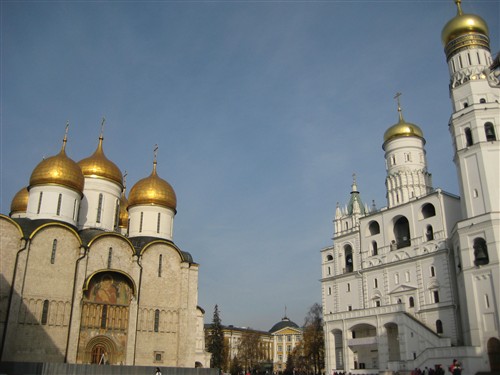 On approach, the Kremlin is striking. Tall red walls line the perimeter, the tops of onion-domed churches barely visible. In addition to the yellow and white government buildings that dominate the interior, there is an inexplicably out of place concrete and glass concert auditorium, and numerous beautiful cathedrals, each topped with glimmering golden domes. With most of the official buildings off-limits to visitors, we spent the majority of our time exploring the cathedrals within the Kremlin walls. We walked from one magnificent cathedral to another, first admiring the unique exterior architecture of each, and then the iconography that literally covered their interiors from floor to ceiling. Every artistic medium was beautifully represented: frescoed walls, carved and tempera-painted wooden icons, gilded silver iconostases, and marble tombs. We were mesmerized by the abundance of religious art.
On approach, the Kremlin is striking. Tall red walls line the perimeter, the tops of onion-domed churches barely visible. In addition to the yellow and white government buildings that dominate the interior, there is an inexplicably out of place concrete and glass concert auditorium, and numerous beautiful cathedrals, each topped with glimmering golden domes. With most of the official buildings off-limits to visitors, we spent the majority of our time exploring the cathedrals within the Kremlin walls. We walked from one magnificent cathedral to another, first admiring the unique exterior architecture of each, and then the iconography that literally covered their interiors from floor to ceiling. Every artistic medium was beautifully represented: frescoed walls, carved and tempera-painted wooden icons, gilded silver iconostases, and marble tombs. We were mesmerized by the abundance of religious art.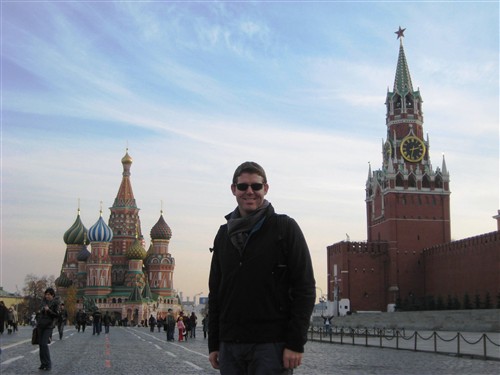 We stopped in the middle of the square and looked around. More than two decades after perestroika, Gorbachev’s period of reform, there was still a palpable Cold War feel here that I couldn’t shake. Lenin’s mausoleum, still heavily guarded by soldiers, inexplicably remains a focal point on the square even after the failed experiment of communism. The massive wall and foreboding towers behind the mausoleum separate the Red Square from the Kremlin, a physical reminder of the Soviet Union, distinguishing the huddled masses from the powerful elite. Yet, incongruously, one of Russia’s finest luxury shopping malls shines like a beacon of capitalism no more than 200 meters away. And the boldly beautiful St Basil’s Cathedral is so awe-inspiring that you keep coming back to it again and again. Red Square is one big contrast – and I loved it. It’s big enough to exude power, but small enough to be intimate. On our trip we have seen many of the grandest plazas in the world but Red Square was, by far, my favorite.
We stopped in the middle of the square and looked around. More than two decades after perestroika, Gorbachev’s period of reform, there was still a palpable Cold War feel here that I couldn’t shake. Lenin’s mausoleum, still heavily guarded by soldiers, inexplicably remains a focal point on the square even after the failed experiment of communism. The massive wall and foreboding towers behind the mausoleum separate the Red Square from the Kremlin, a physical reminder of the Soviet Union, distinguishing the huddled masses from the powerful elite. Yet, incongruously, one of Russia’s finest luxury shopping malls shines like a beacon of capitalism no more than 200 meters away. And the boldly beautiful St Basil’s Cathedral is so awe-inspiring that you keep coming back to it again and again. Red Square is one big contrast – and I loved it. It’s big enough to exude power, but small enough to be intimate. On our trip we have seen many of the grandest plazas in the world but Red Square was, by far, my favorite.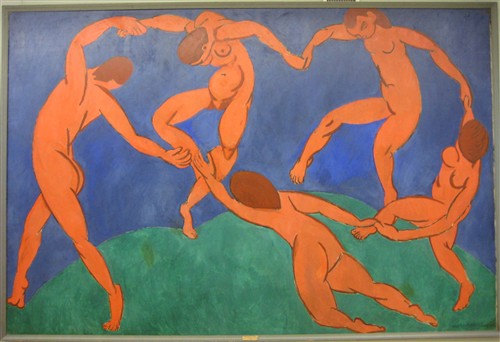

 When I opened them about thirty seconds later, one of the young women on the floor had begun a naked yoga sequence. This exercise took the word “uninhibited” to a whole new level. Now, let me be clear that this was a small sauna. This sequence of yoga postures was being performed less than three feet away from me. I was not bothered by it in the slightest – I was mesmerized actually. Yoga practice is quite beautiful to watch. I’ve just never seen it done naked and in such close proximity. It was, however, by this time growing excruciatingly hot. With my face on the verge of melting, I took my naked, sweaty self down the stairs and back to the lockers. With visions of naked yoga racing through my mind, I dressed quickly and walked downstairs. I had been inside for less than half an hour but decided that it was enough for today.
When I opened them about thirty seconds later, one of the young women on the floor had begun a naked yoga sequence. This exercise took the word “uninhibited” to a whole new level. Now, let me be clear that this was a small sauna. This sequence of yoga postures was being performed less than three feet away from me. I was not bothered by it in the slightest – I was mesmerized actually. Yoga practice is quite beautiful to watch. I’ve just never seen it done naked and in such close proximity. It was, however, by this time growing excruciatingly hot. With my face on the verge of melting, I took my naked, sweaty self down the stairs and back to the lockers. With visions of naked yoga racing through my mind, I dressed quickly and walked downstairs. I had been inside for less than half an hour but decided that it was enough for today.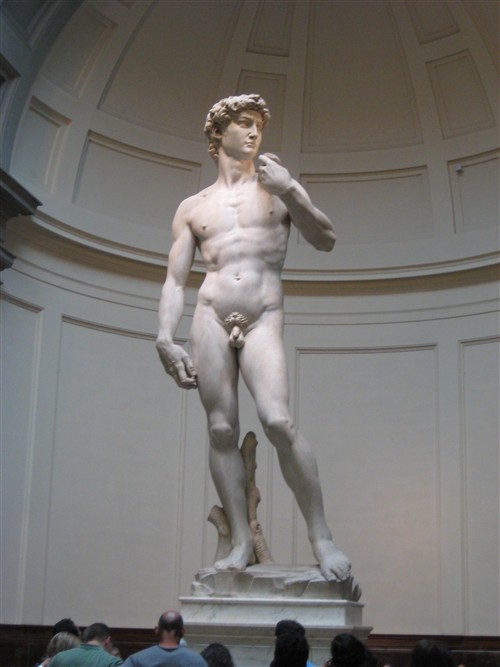 With no signage that I could decipher, I walked, stark naked, in what appeared to be the right direction. For anyone who has ever been in a locker room, you understand the awkward nature of walking around naked, when everyone else is naked, while trying not to make eye contact. But looking down to avoid eye contact all you see is privates. It’s a no win situation.
With no signage that I could decipher, I walked, stark naked, in what appeared to be the right direction. For anyone who has ever been in a locker room, you understand the awkward nature of walking around naked, when everyone else is naked, while trying not to make eye contact. But looking down to avoid eye contact all you see is privates. It’s a no win situation.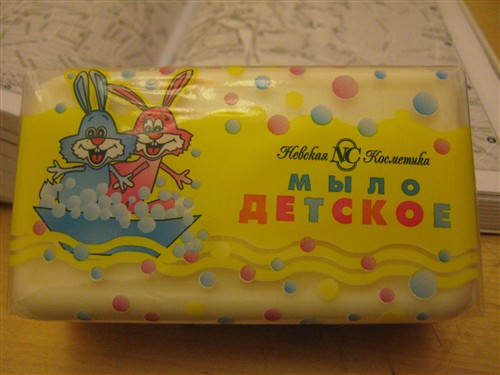 In the midst of this train of thought, the man who had earlier beckoned me to follow him into the sauna, appeared (naked, of course) and handed me a brand new, sealed bar of soap with pink and blue bunnies on the wrapper, and said, “Present.” with a heavy Russian accent. You’ve got to be kidding me! What should I do? Uncomfortably, I accepted the soap and quickly went for my clothes. My prison survival instincts were screaming that that was my queue to get out of there – pronto – before I became someone’s bath time buddy.
In the midst of this train of thought, the man who had earlier beckoned me to follow him into the sauna, appeared (naked, of course) and handed me a brand new, sealed bar of soap with pink and blue bunnies on the wrapper, and said, “Present.” with a heavy Russian accent. You’ve got to be kidding me! What should I do? Uncomfortably, I accepted the soap and quickly went for my clothes. My prison survival instincts were screaming that that was my queue to get out of there – pronto – before I became someone’s bath time buddy.